Sewing
box Index

History of sewing
boxes
Request current
list of available sewing boxes
| |
Artist Painted Curvaceous Papier Mâchè Fully
Fitted Sewing box, by Jennens and Bettridge circa 1840
Please click on images to enlarge | slide show | thumbnail index |
Reference: Sb473
Description:
SB473: An artist painted fully fitted papier mâchè sewing box of
curvilinear form by Jennens and Bettridge, the inside with silk covered
lift out tray with supplementary lids in velvet and retaining its
original sewing tools in silver and a set of six turned and carved
mother of pearl spools. The painting depicts a life like peacock
in a classical garden complete with statuary and a profusion of flowers.
To increase the lumessence the painter has used a ground of bronze and
gold. Circa 1840.
Origin: UK
Jennens and Bettridge.
Circa: 1840
Size: 23.6 cm wide by 18 cm by 14 cm:
9.3 inches wide
by 7 inches by 5.5 inches.
Condition: Very good over
all. working lock and key. See images.
|
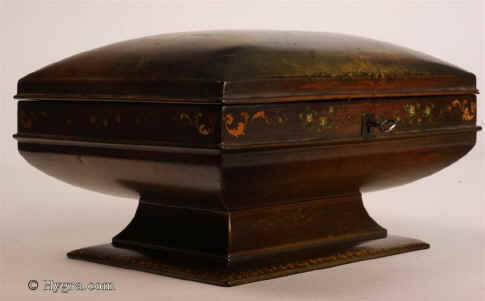
The papier mâchè is utilized to create a complex classical
form more usual in a vessel with the curved box raised upon a
plinth.
|
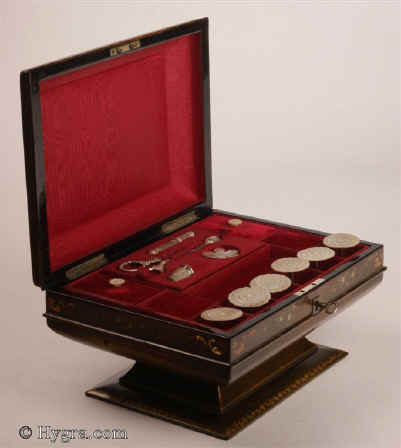
|
The inside with silk lined
lid, and silk covered lift out tray with supplementary lids
in velvet and retaining its original sewing tools in silver and a set of
six turned and carved mother of pearl spools.
The scissors handles the
stiletto handle, the thimble, and the needle case are
unmarked but test as silver.
There are mother of pear
pulls to two of the lids. These, as the spool tops are turned and
carved.
|
Please click on images to enlarge | slide show | thumbnail index |
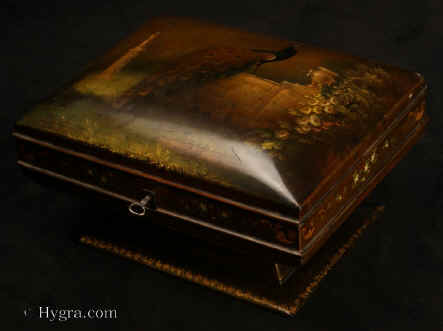
|
The painting depicts a life
like peacock in a classical garden complete with statuary and a
profusion of flowers. To increase the lumessence the painter has
used a ground of bronze and gold.
"During the decades of quality painted work, struggling artists
often worked incognito, painting on papier mâché in order to support
their purer artistic efforts. They seldom marked their work, possibly
because the firms they worked for did not approve of artist
identification, or possibly because they themselves did not wish to
advertise the fact that their work could be bought on a piece of
applied, rather than pure art. Jennens and Bettridge sometimes had the
name of the firm painted on the margin of pictures. "Studios"
for the decoration of blanks were set up as early as the last two
decades of the 18th century. Joseph Barney, a fruit and flower painter,
Haseler, and Robert Noyes, were some of the first artists working in
this way. It is impossible to know whose hand was responsible for some
of the wonderful painting and decoration on papier mâché boxes."
(See: Antique
Boxes, Tea Caddies, and Society 1700--1880 Antigone Clarke &
Joseph O'Kelly, pages 82-86. ISBN: 0764316885)
|
The inside with silk lined
lid, and silk covered lift out tray with supplementary lids
in velvet and retaining its original sewing tools in silver and a set of
six turned and carved mother of pearl spools.
The scissors handles the
stiletto handle, the thimble, and the needle case are
unmarked but test as silver.
There are mother of pear
pulls to two of the lids. These, as the spool tops are turned and
carved.
|
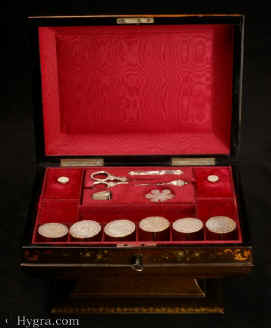
|
Please click on images to enlarge | slide show | thumbnail index |
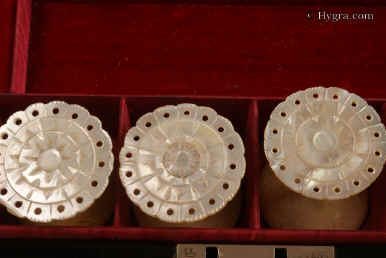
|
The mother of pearl spool tops are both turned and carved. There
is a set of six. The tray is lined in both velvet and silk.
Thread by this time was supplied wound which would be put on these.
The other end of the spool is bone. The central part is composed of a
cylinder and a rod and comes apart to enable the thread spool to be put
on it.
|
Please click on images to enlarge | slide show | thumbnail index |
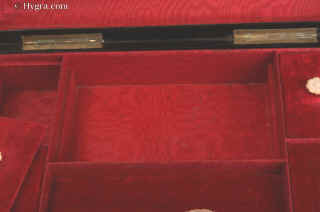
|
The tray is lined with silk. here is the compartment under the separate
tray with the tools
|
Under the tray has been finished in smooth black
papier mâchè.
"In general terms, the process was as follows: the article was
first coated with a mixture of fine lampblack and tar varnish and then
just with tar varnish. When dry, it was planed or rubbed smooth, before
receiving more coats of varnish, each coat rubbed smooth with pumice.
Then the article was polished with powdered pumice and rotten stone. The
final gloss was achieved with finely powdered rotten stone rubbed with
the hand."
(See: Antique
Boxes, Tea Caddies, and Society 1700--1880 Antigone Clarke &
Joseph O'Kelly, pages 82-86. ISBN: 0764316885)
|

|
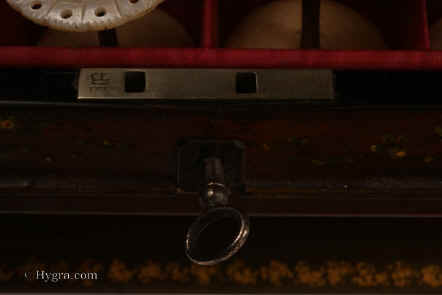
|
The lock-plate is stamped with a crown and "VR"
(Victoria Regina"
and "patent". The "patent refers to the form of
lever in the mechanism of the lock.
|
Please click on images to enlarge | slide show | thumbnail index |
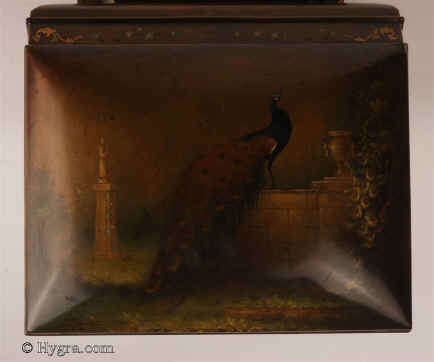
click the image to enlarge
|
The painting depicts a life
like peacock in a classical garden complete with statuary and a
profusion of flowers. To increase the lumessence the painter has
used a ground of bronze and gold.
"During the decades of quality painted work, struggling artists
often worked incognito, painting on papier mâché in order to support
their purer artistic efforts. They seldom marked their work, possibly
because the firms they worked for did not approve of artist
identification, or possibly because they themselves did not wish to
advertise the fact that their work could be bought on a piece of
applied, rather than pure art. Jennens and Bettridge sometimes had the
name of the firm painted on the margin of pictures. "Studios"
for the decoration of blanks were set up as early as the last two
decades of the 18th century. Joseph Barney, a fruit and flower painter,
Haseler, and Robert Noyes, were some of the first artists working in
this way. It is impossible to know whose hand was responsible for some
of the wonderful painting and decoration on papier mâché boxes."
(See: Antique
Boxes, Tea Caddies, and Society 1700--1880 Antigone Clarke &
Joseph O'Kelly, pages 82-86. ISBN: 0764316885)
|
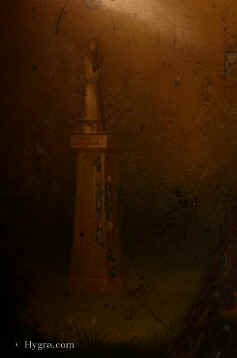
|
|
Struggling artists often worked incognito, painting on papier mâché
in order to support their purer artistic efforts
|
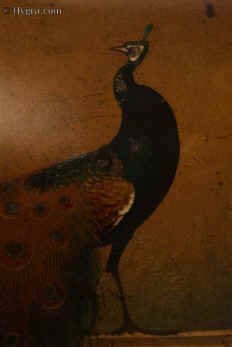
|
Please click on images to enlarge | slide show | thumbnail index |

|
The box is marked on the underside
"Jennens and Bettridge"
In 1815 Jennens and Bettridge
took over Henry Clay’s workshops. Henry Clay was the first papier mâchè
box maker to hold the Royal warrant.
Jennens and Bettridge expanded both
the popularity and decorative styles of the medium of Papier
mâché.
|
Please click on images to enlarge | slide show | thumbnail index |
We illustrated another papier mache box with exquisite
painting of birds in our book:
"A box with a lift out tray fitted with sewing tools, and five
mother of pearl spools. It is stamped Jennens and Bettridge, under a
crown. The top is painted with a peacock amongst flowers and grapes.
Parrots and butterflies are painted all around. The main scenes are
enclosed within fine rococo cartouches. Note the very fine quality of
the painting and gilding, which attests to the work of one of the master
painters."
The velvet sewing tray is very similar to this box
(See: Antique
Boxes, Tea Caddies, and Society 1700--1880 Antigone Clarke &
Joseph O'Kelly, pages 82-86. ISBN: 0764316885) |
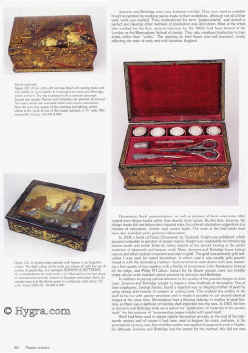
|
Please click on images to enlarge | slide show | thumbnail index |
Please click on images to enlarge | slide show | thumbnail index |
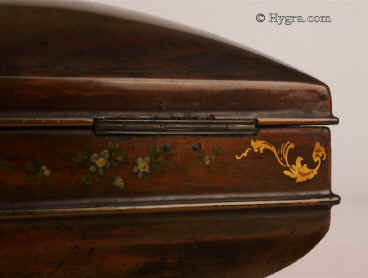
The finely painted floral decoration is on an opaque gold
and bronze base.
|
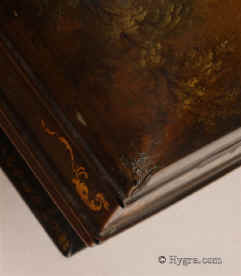
|
Please click on images to enlarge | slide show | thumbnail index |
Please click on images to enlarge | slide show | thumbnail index |
All text and images and linked images are ©
1999-2009 Antigone Clarke and Joseph O'Kelly. If you require any further
information on permitted use, or a licence to republish any material, email us
at copyright@hygra.com
|
